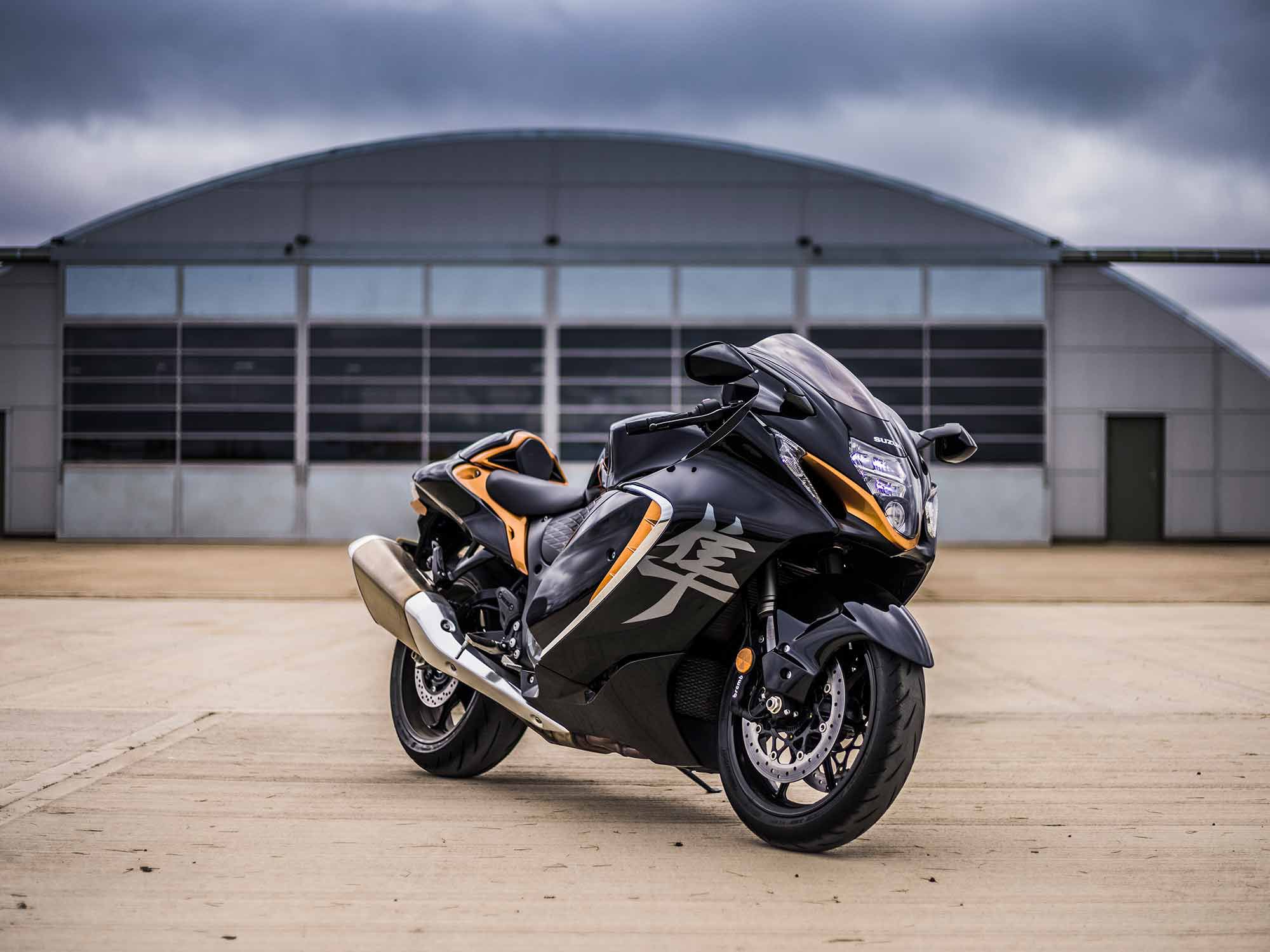
Times have changed, 200 hp is routine. Is there still a market for the big Suzuki, or should it be ushered into the retirement home for a well-deserved rest and a chance to reminisce about the days before traction control?
The ‘Busa hasn’t had its day; in fact, it’s better than ever, and still accelerates with enough force to dislodge your internal organs.
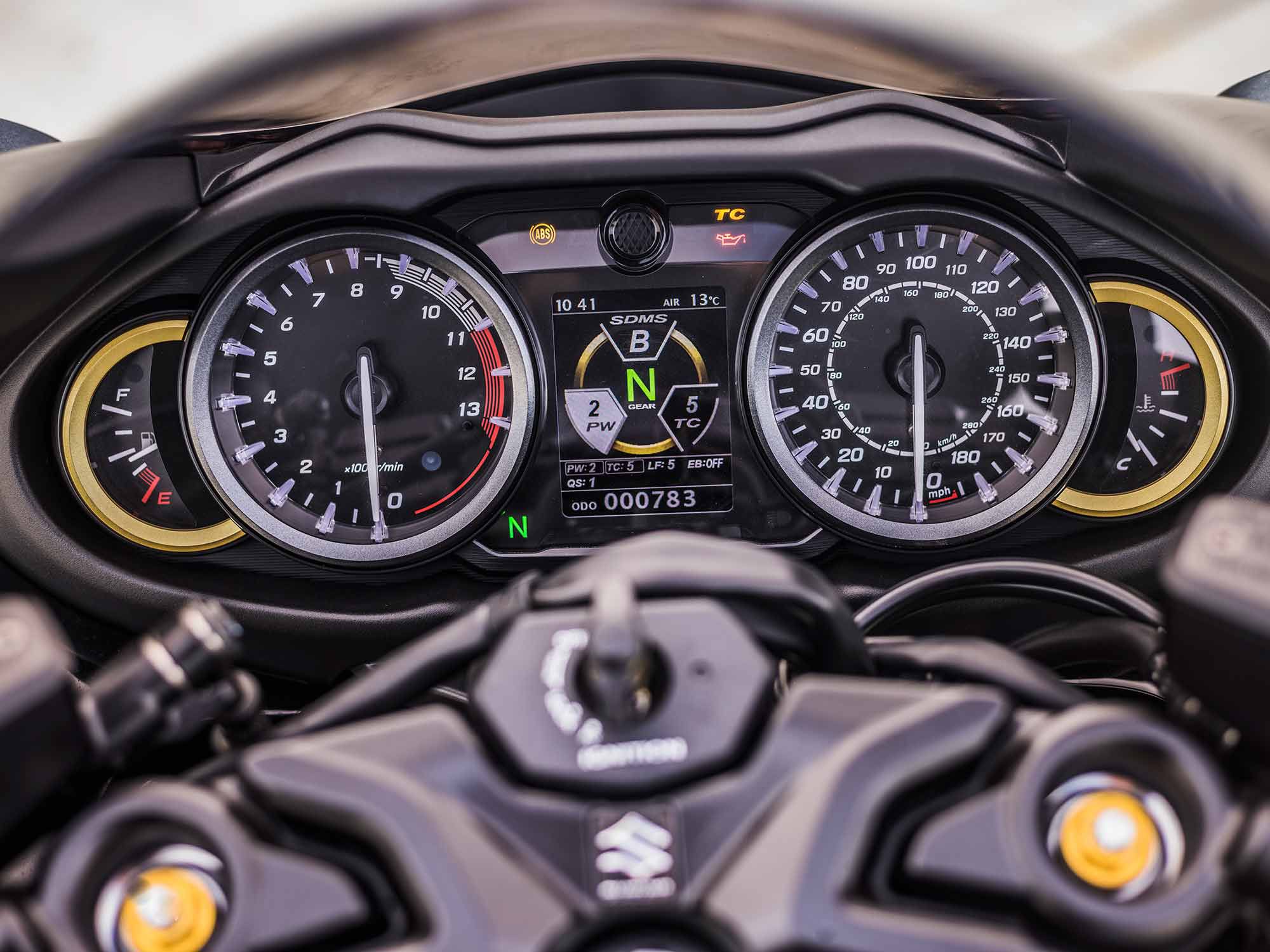
Editor’s note: Get up to speed on the 2022 Hayabausa’s technical improvements in the 2022 Suzuki Hayabusa GSX1300R First Look Preview article. Also read and watch the 2020 Suzuki Hayabusa GSX1300R MC Commute Review to learn about the previous generation model.
Although I’m slightly disappointed Suzuki didn’t add a turbo or increase capacity and push past the magical 200 bhp, I can see why it didn’t. Why make a bike with even more peak power when it’s already capable of hitting its speed limiter with ease? Instead, Suzuki has given the ‘Busa a kick up the midrange with the factory claiming that the new bike is 0.1 second quicker to 62 mph and is 0.1 second quicker over 656 feet than the generation-two model.
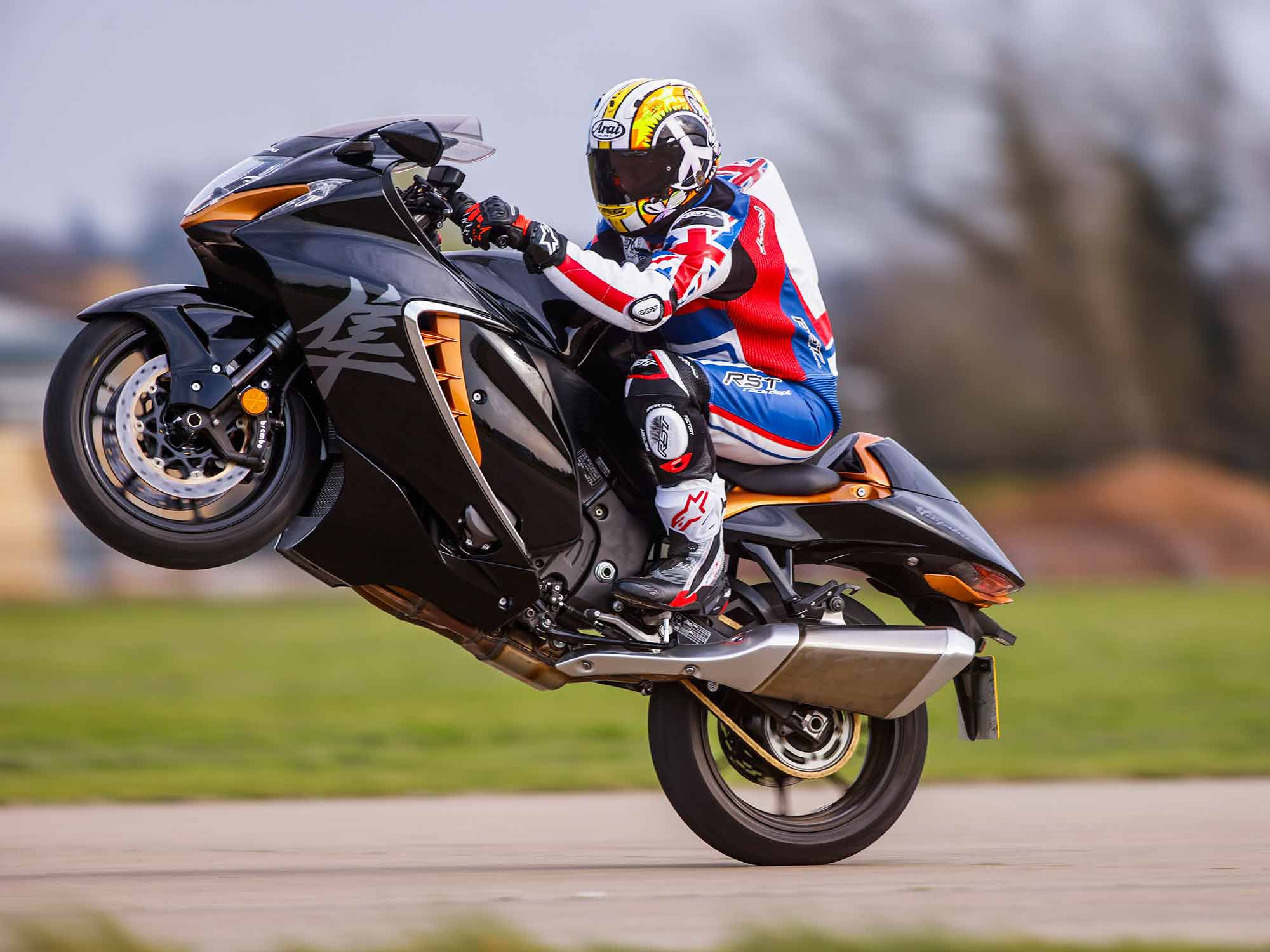
Bikes producing 200 bhp have become relatively commonplace, but within a few miles of slotting into the new Suzuki, I wound back the throttle and went supersonic. Wow, the ‘Busa’s still got it. The midrange acceleration in fifth and sixth gear is superb, but be brave, drop back to second or third, and from 40 mph it just wants to take off.
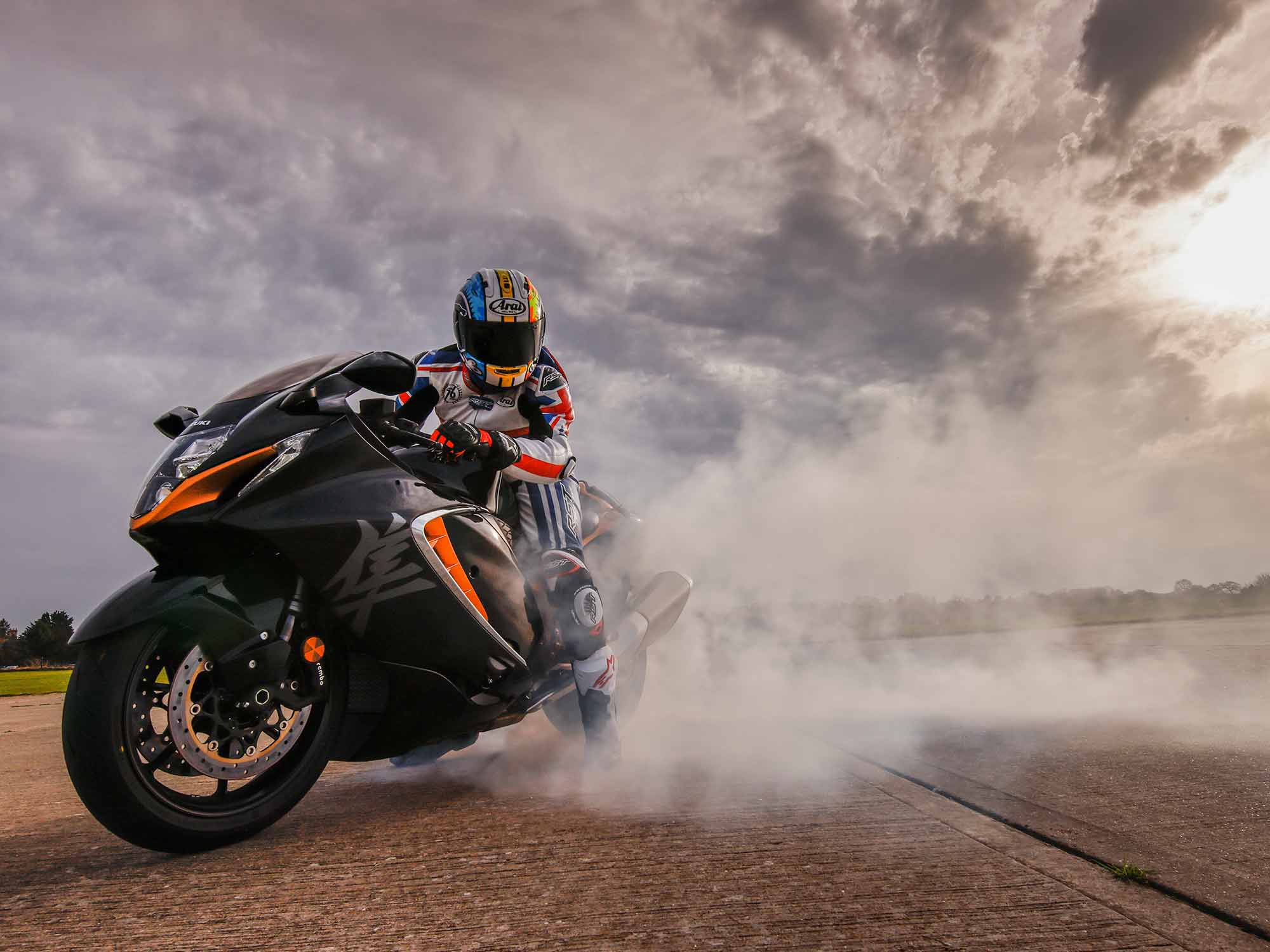
The ‘Busa sits slightly on its relatively soft KYB rear shock, and the bespoke rear Bridgestone S22 combines with a long wheelbase to find sensational mechanical grip and propel you forward at an alarming rate: 100 mph in just over 5 seconds, around 11 seconds to 150 mph. I couldn’t stop kicking back a few gears on the (standard) up-and-down, supersmooth quickshifter just to experience that acceleration again. Hey, 100 mph is nothing, 130 mph is gone in a flash.
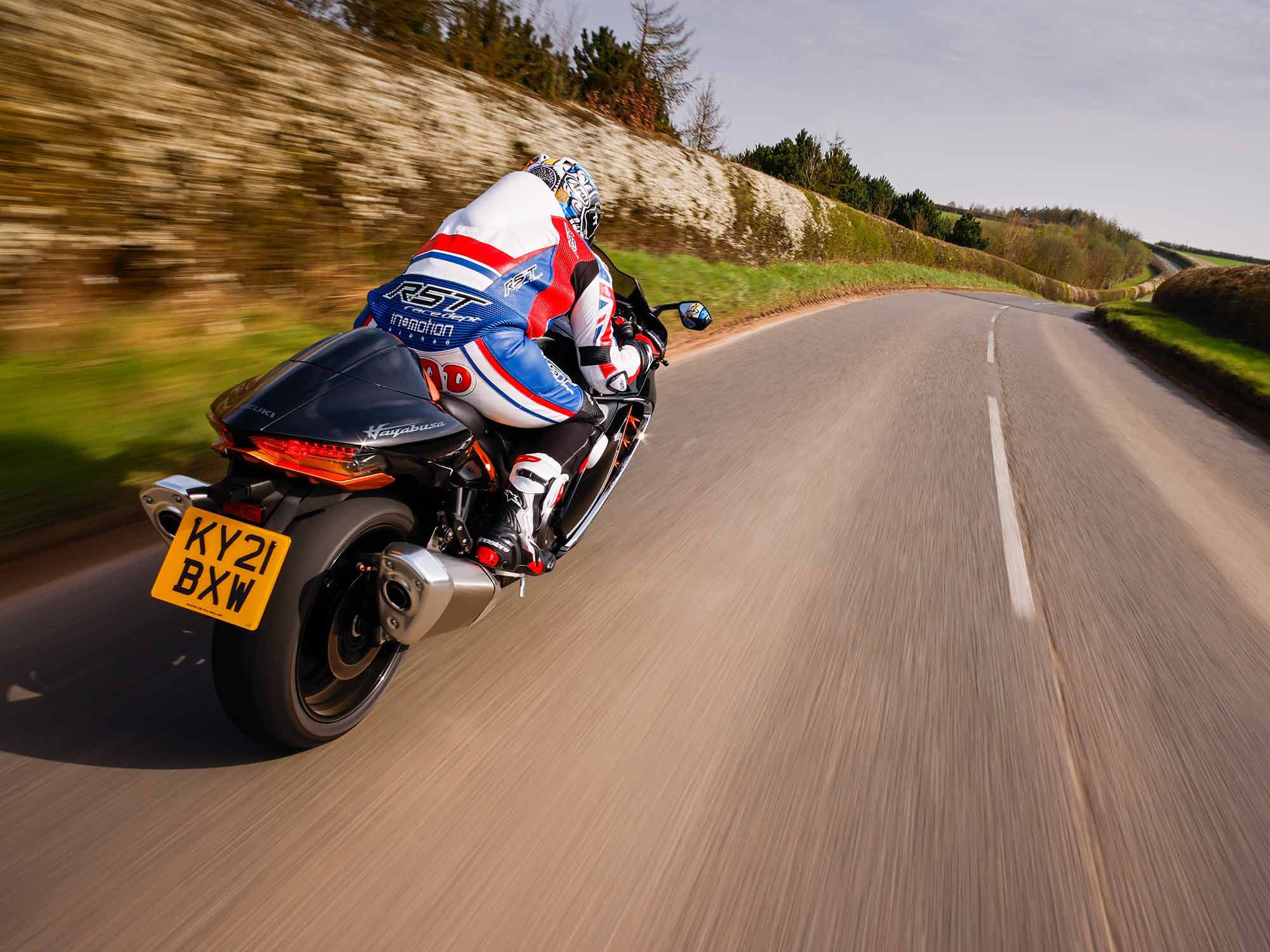
The new bike hasn’t just been designed to embarrass almost any bike from the lights, there is a practical side too. In a normal riding environment, it’s a usable and, dare I say, friendly motorcycle. Central to this is that Suzuki has significantly improved and updated the electronic rider aids, with a new six-axis IMU now linked to three rider modes. The softer of the three modes noticeably restricts the power and torque, making the ‘Busa feel obedient in comparison to the full-power mode. Meanwhile, the quickhsifter works fluidly, even at slow speeds, and the gearbox is light. So you can ride the ‘Busa “normally,” just.
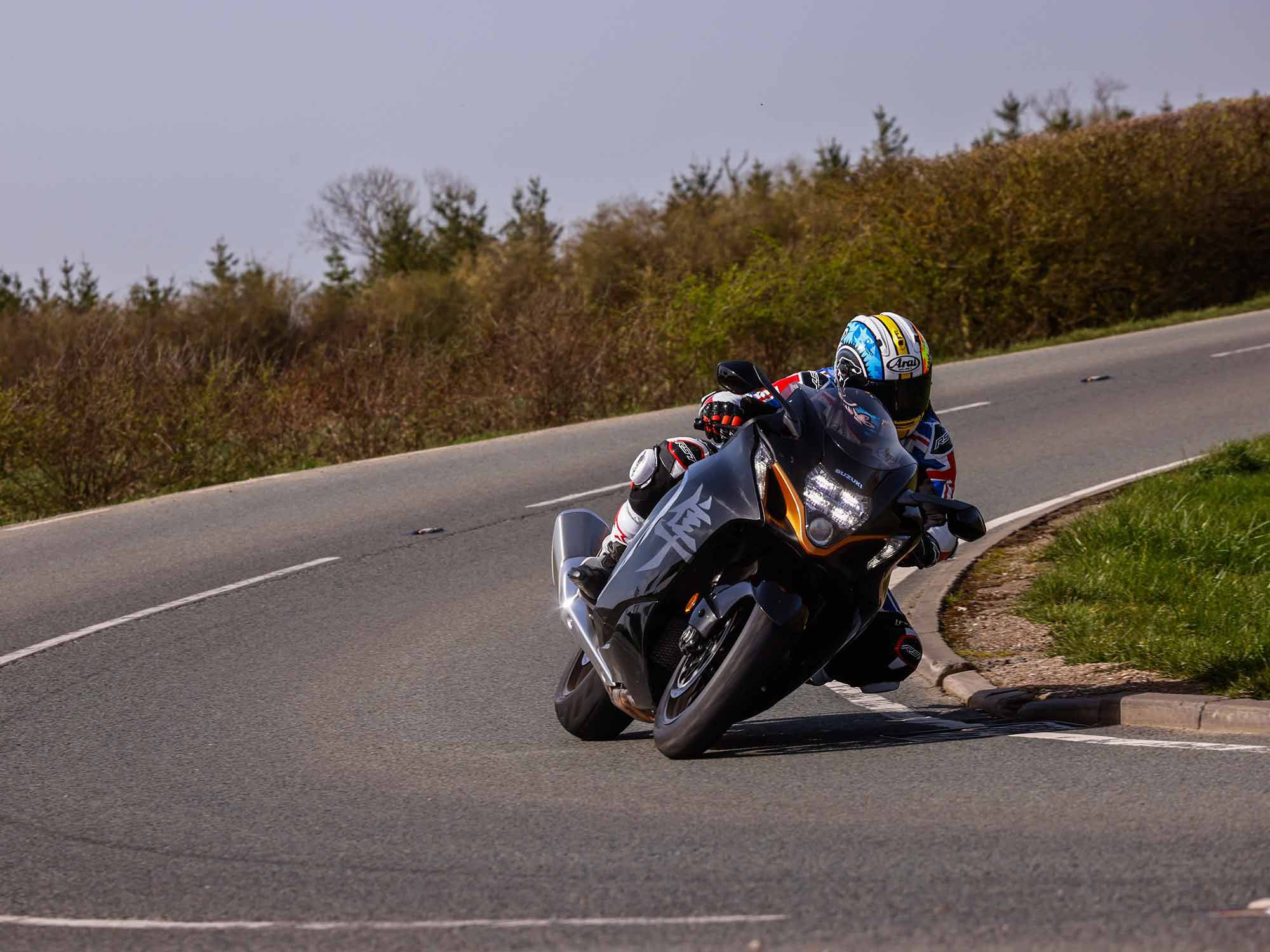
The new six-axis IMU enables lean-sensitive ABS braking, traction control, wheelie control (anti-wheelie), engine-braking control, and those three power modes with varying levels of engine performance. There’s even launch control, which limits the revs to 4,000 rpm, 6,000 rpm, or 8,000 rpm. Add the quickshifter (which, incidentally, is changeable) and anyone can now launch a ‘Busa off the line with ease and in safety.
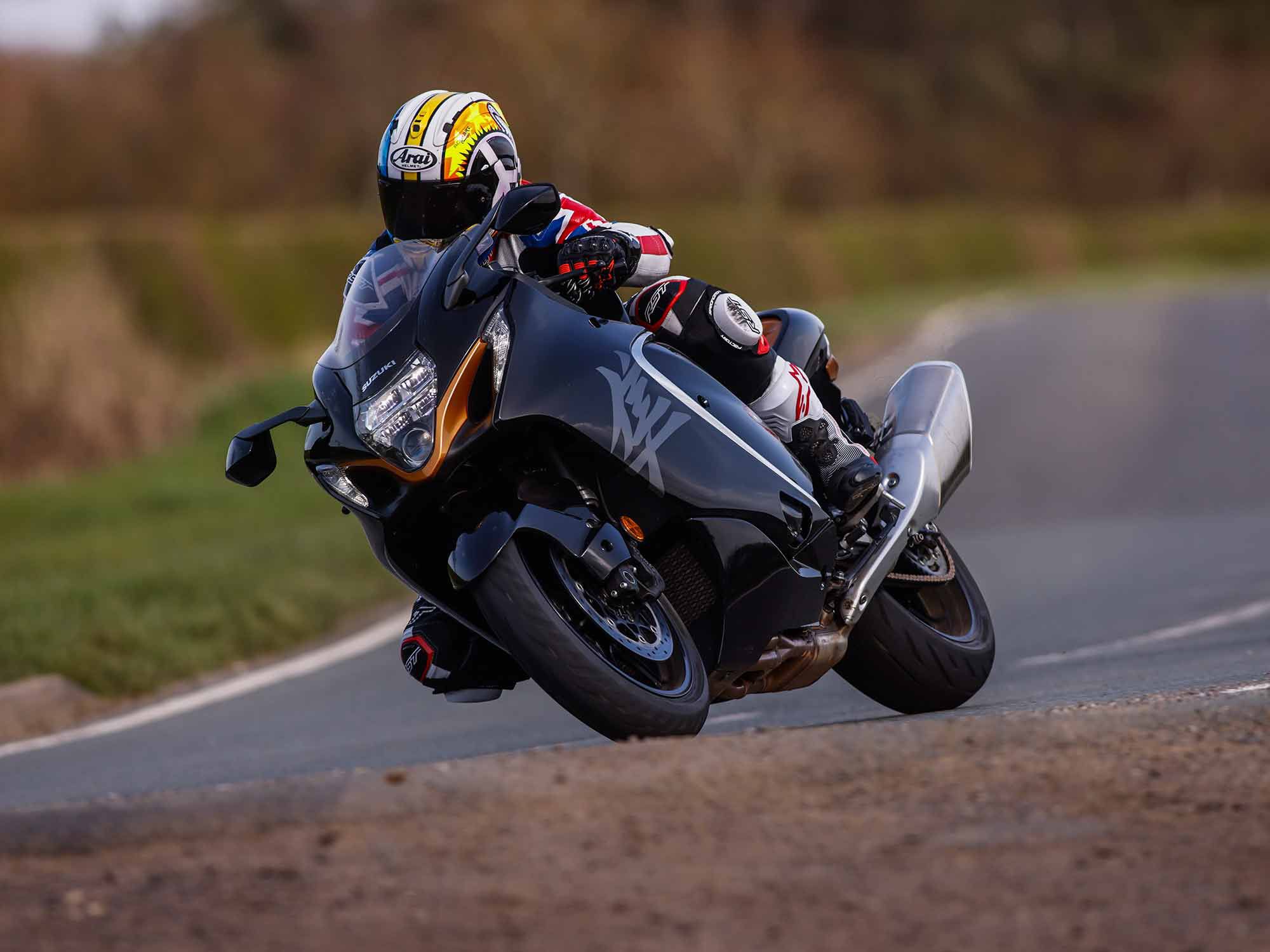
There are six riding modes to choose from; three being preset and three you can personalize. Essentially, the three preset modes offer varying levels of control, from full power and minimal rider aids to reduced power and intrusive rider aids. The three personal settings are just that, and can be tailored to how and where you ride. All this is accessible via new and simple switch gear and is clearly displayed on the TFT clocks, between the analog speedo and rev counter, which remain triumphantly old school. Not only do I applaud Suzuki for keeping with traditional dials, I like the way it has also made the rider aids accessible, useful, and easy to navigate. Better still, you can flick from, say, low power with full rider aids to a personalized hooligan setting of no rider aids and full power whilst on the move.
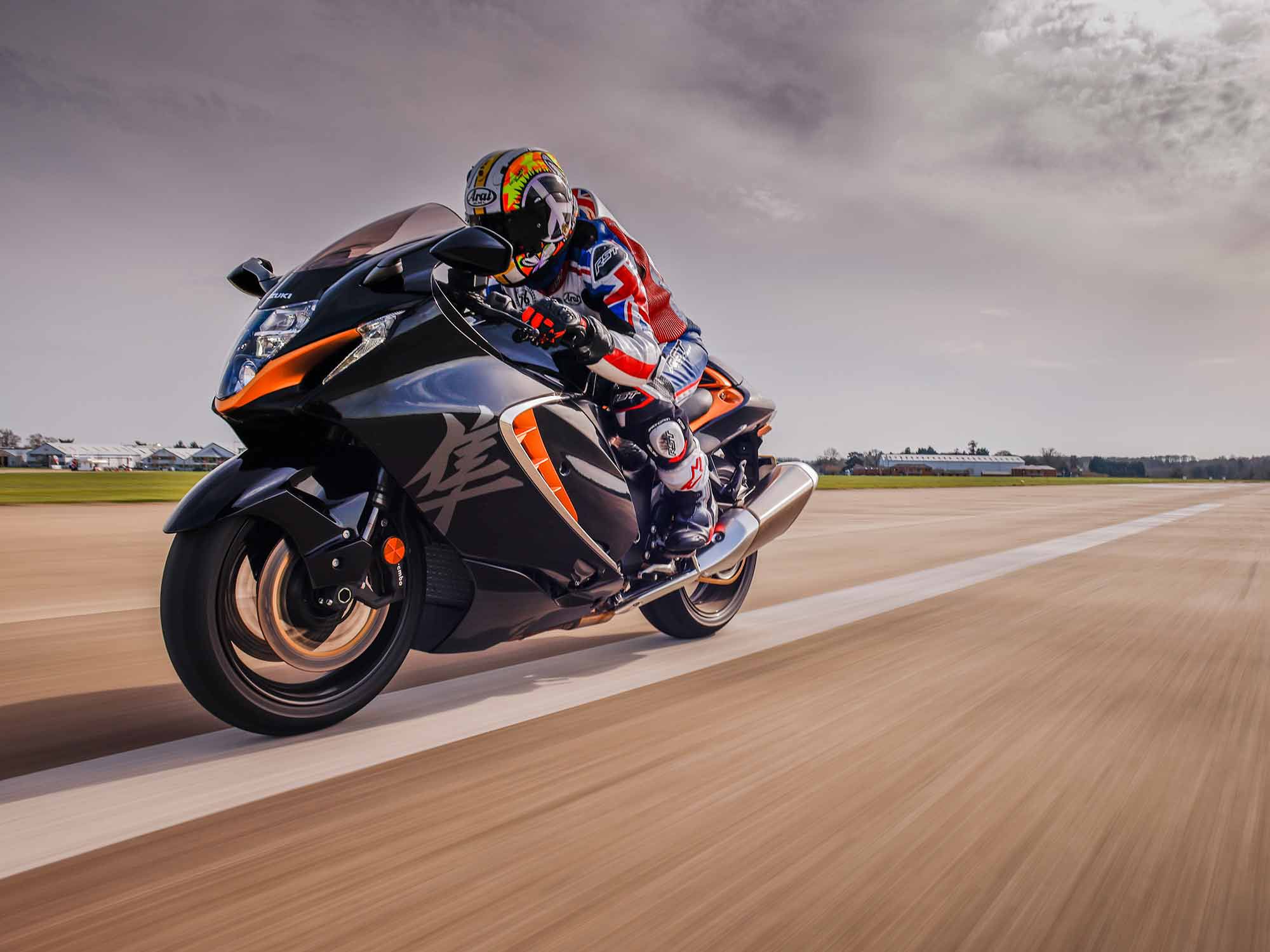
Braking was always a weak point of the Hayabusa. Suzuki has rectified this by spending some cash on the latest Brembo Stylemas radial items, larger 320mm discs, and, as mentioned, cornering ABS (in partnership with Bosch). The brakes are also now linked, front to back, but not back to front, and there’s a three-stage engine-braking strategy, plus slipper clutch as standard. The result is stopping performance that’s a significant step over the previous model and would thoroughly embarrass the original ‘Busa from 100 mph–0 mph.
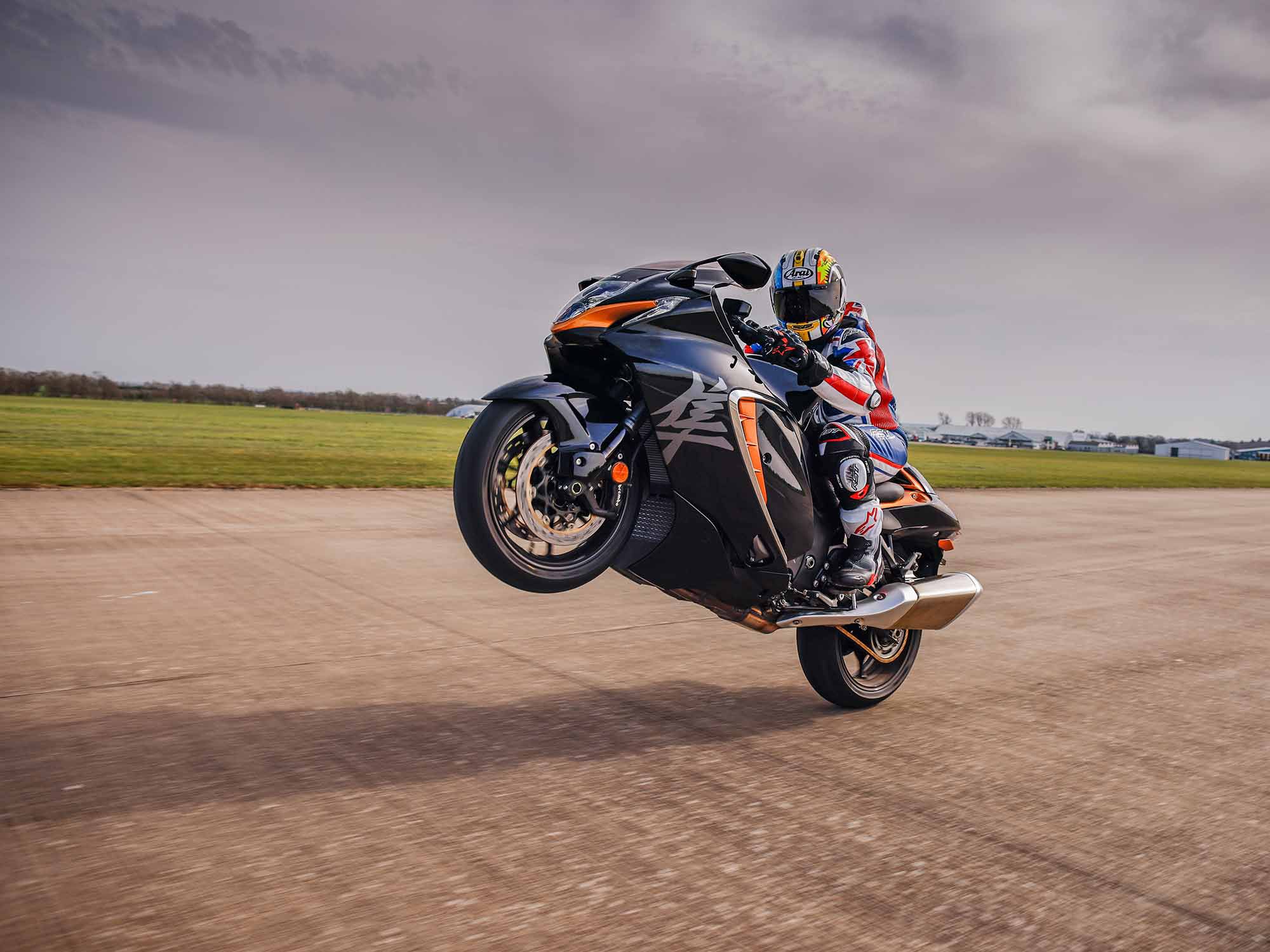
The twin-spar frame is essentially the same as the previous model, and externally, the KYB 43mm fork and KYB rear shock appear to be remarkably similar too. However, Suzuki assures us the suspension has been reworked with new settings, spring, and valves. Fork rigidity has also been improved. The result is quality. Stability, which has always been a strong point of the ‘Busa, is unquestionable.
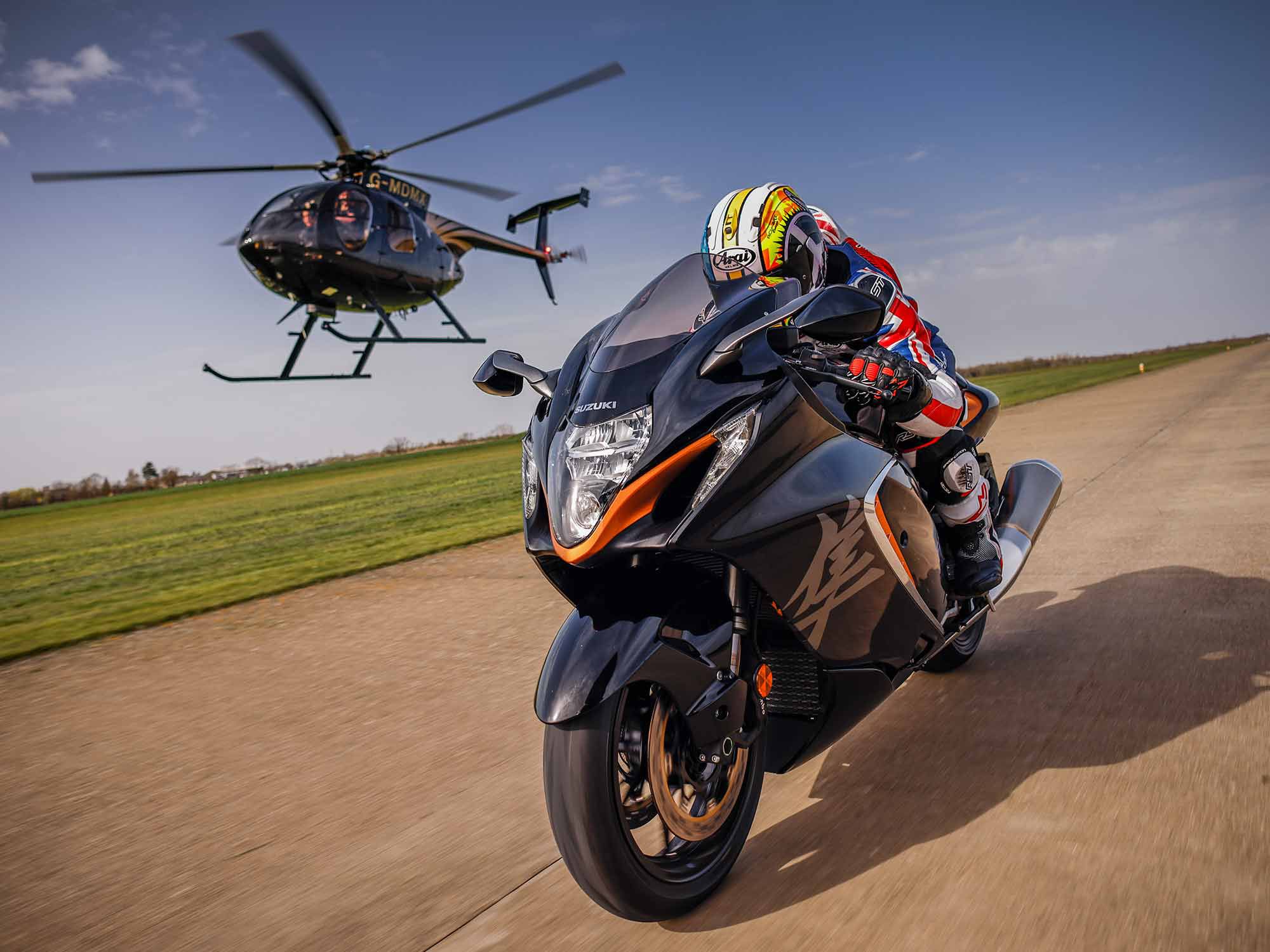
The changes it has made means the bike handles far better than I remember. It takes on bumps and imperfections with unruffled ease and will happily lay on its side to knee-down extremes, feeling planted and tracking accurately.
Suzuki has improved comfort, by moving the bars 0.48 in closer to the rider. It makes a real difference, especially at slow speeds when you have lots of weight on your wrists. The pegs are still relatively high. I’m presuming Suzuki couldn’t lower the pegs due to already-limited ground clearance, and the new bodywork is an improvement, but the screen is still on the low side.
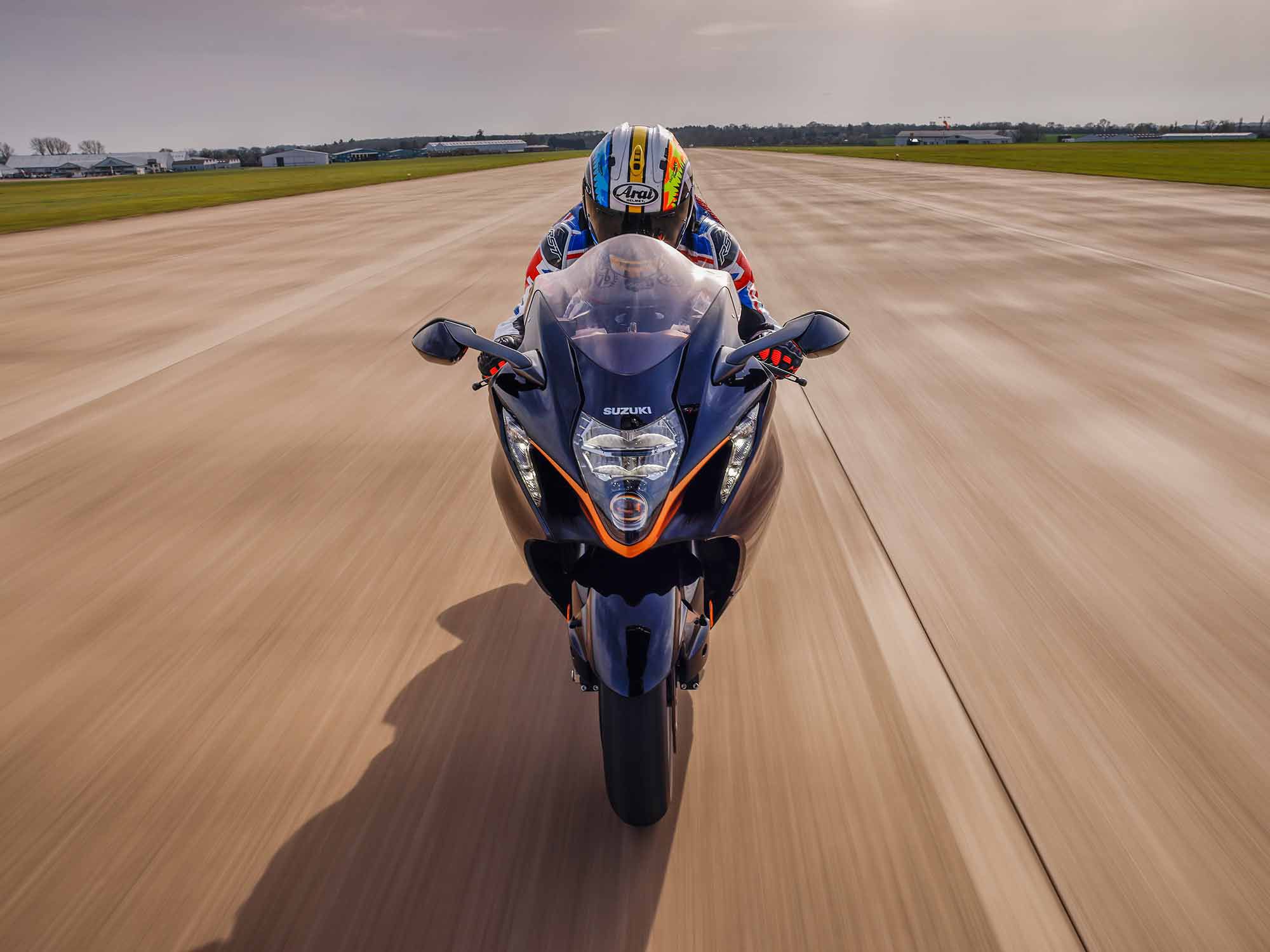
Cruise control now comes as standard, which is a great addition, and there is even a speed limiter. Easy start, low rpm assist and hill control add to an already impressive list of standard equipment. Euro 5 restrictions mean fuel consumption has increased, yet the fuel tank size has remained the same at 5.3 gallons.
I congratulate Suzuki for staying with that familiar ‘Busa styling; it’s immediately obvious this is a Hayabusa. The integrated indicators and rear light neaten up the rear end, and I even like the new exhaust. Onboard the pre-mentioned dash is neat, clear, and easy to understand, while personally, I don’t care that there isn’t any Bluetooth connectivity.
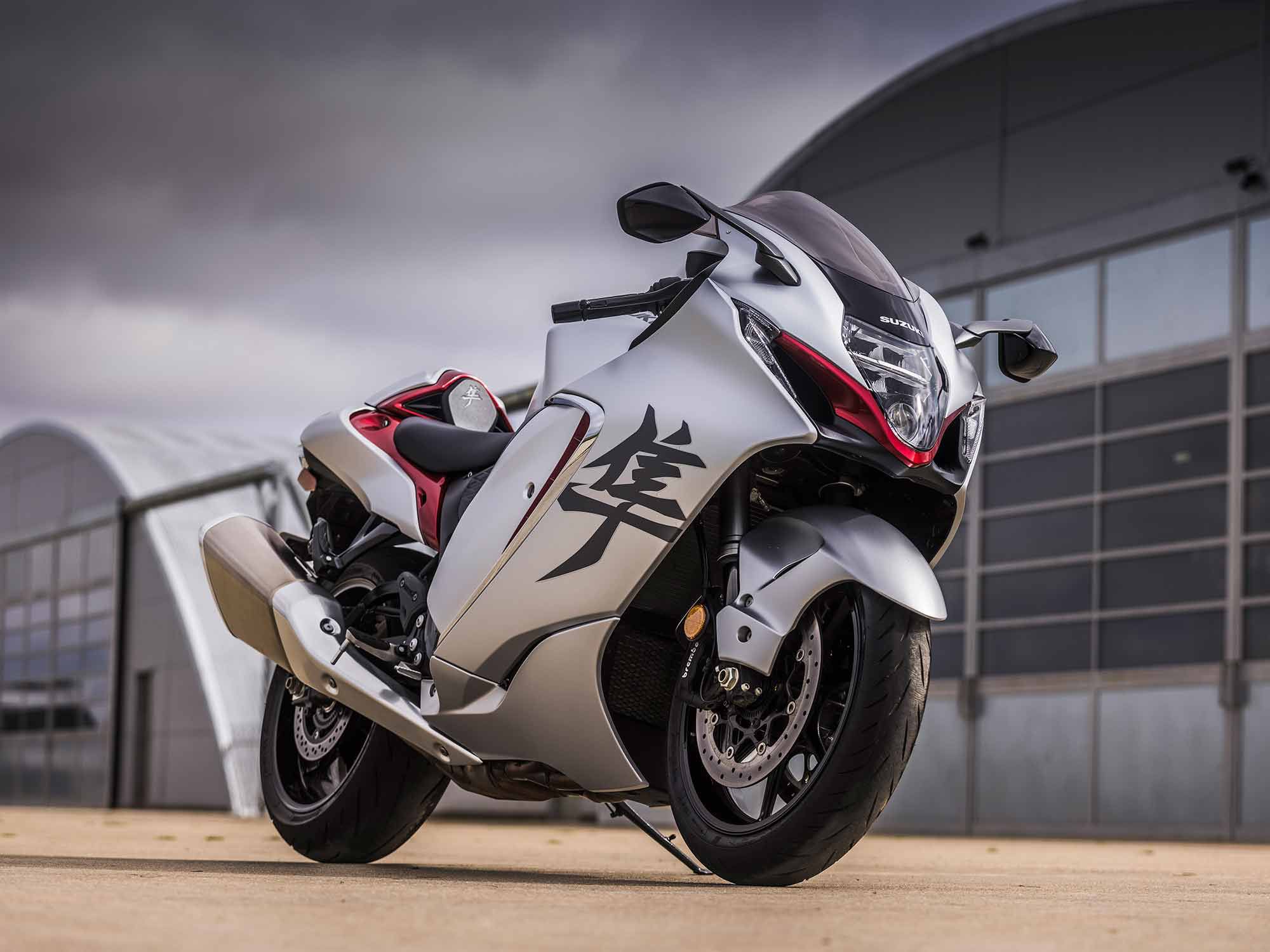
Everything feels solid, well thought out, and, without wishing to be too harsh, at a higher level than other recent Suzukis. The only slight negative is the price which has risen significantly since the generation-two bike was discontinued. It’s also significantly more expensive than Kawasaki’s Ninja ZX-14R and, price-wise, is now more on par with Kawasaki’s supercharged Ninja H2 SX.
Verdict
Suzuki hasn’t gone chasing peak power, as doing so would be wasted given that it is restricted to 186 mph. Instead, it has added advanced rider aids, a sleek design, updated TFT clocks, much-improved brakes, and increased comfort—ticked all the boxes we wanted ticked, yet it still looks and feels like the original legend. The engine may have lost some top-end power, but it has gained in the midrange, and takes your breath away every time you crack open the throttle. It’s hard not to ride extremely fast on the ‘Busa, you have been warned.
RELATED: More Motorcycle Reviews And Comparisons
Some may not like the design, some will turn their noses up at the reduced fuel range, and a small percentage will not like the relative lack of more top-end power. But for me, it’s still a ‘Busa, still one of the fastest and thrilling ways of getting from A to B in comfort, only now with more style, safety, and real-world grunt than before. The legend continues.
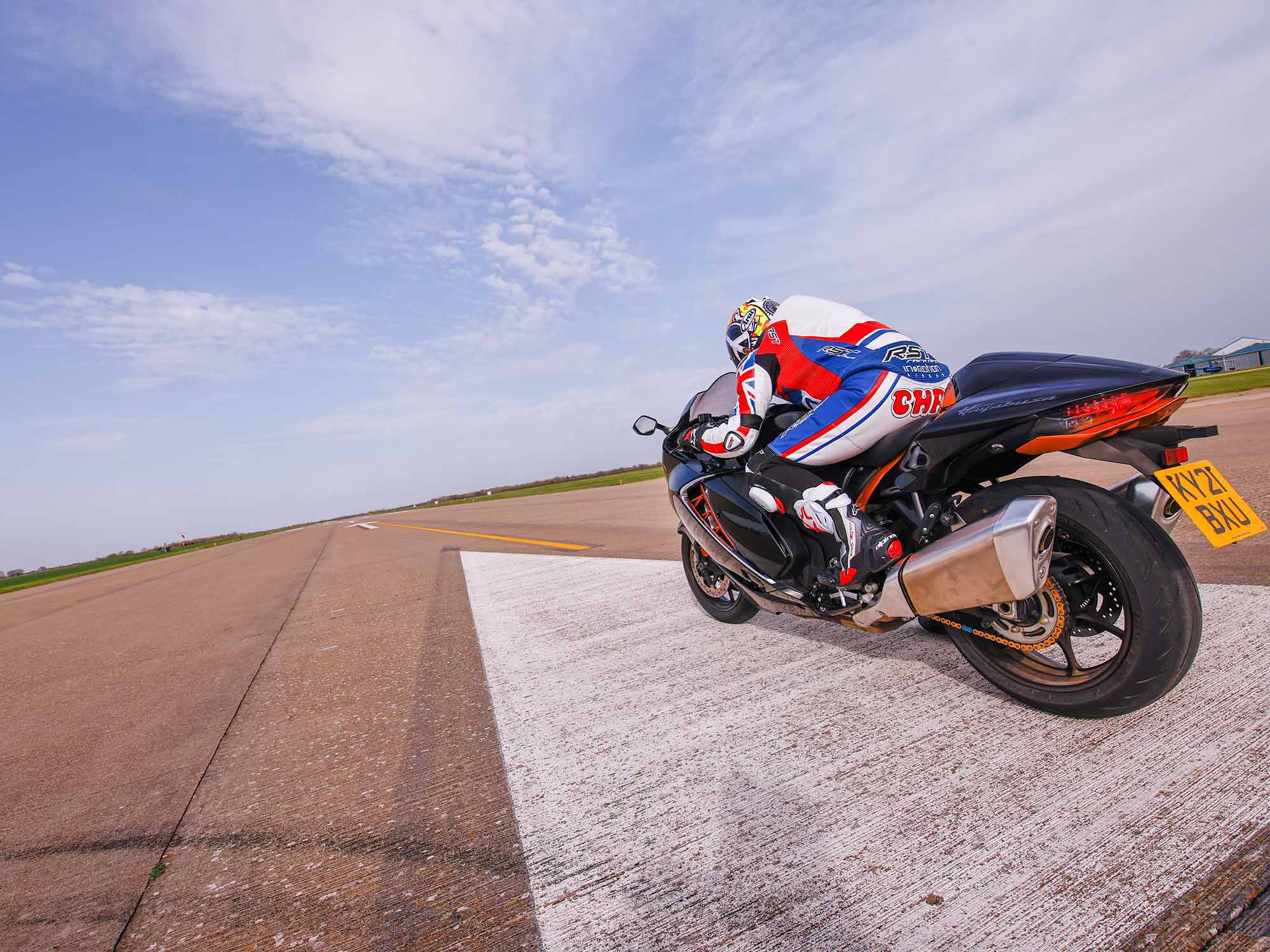
2022 Suzuki Hayabusa Technical Specifications and Price
| PRICE | $18,599 (UK £16,499) |
|---|---|
| ENGINE | 1,340cc, DOHC, liquid-cooled four-cylinder; 4-valve/cyl. |
| BORE x STROKE | 81.0 x 65.0mm |
| COMPRESSION RATIO | 12.5:1 |
| FUEL DELIVERY | Fuel injection w/ 43mm throttle bodies, ride-by-wire |
| CLUTCH | Wet, multiplate, slipper/assist |
| TRANSMISSION/FINAL DRIVE | 6-speed/chain |
| CLAIMED HORSEPOWER | 190 hp @ 9,700 rpm |
| CLAIMED TORQUE | 110.6 lb.-ft. @ 6,500 rpm |
| FRAME | Alloy twin spar |
| FRONT SUSPENSION | KYB fully adjustable 43mm fork; ??? in. travel |
| REAR SUSPENSION | KYB shock, fully adjustable; ?? in. travel |
| FRONT BRAKE | Radial Brembo Stylema 4-piston caliper, 320mm discs w/ Cornering ABS |
| REAR BRAKE | 1-piston floating caliper, 250mm disc w/ Cornering ABS |
| WHEELS, FRONT/REAR | Spoked alloy; 17 x 3.5 in. / 17 x 5.5 in. |
| TIRES, FRONT/REAR | Bridgestone S22; 120/70-17 / 190/50-17 |
| RAKE/TRAIL | 23.0°/3.54 in. |
| WHEELBASE | 58.3 in. |
| SEAT HEIGHT | 31.5 in. |
| FUEL CAPACITY | 5.3 gal. |
| CLAIMED CURB WEIGHT | 582 lb. |
| WARRANTY | 1 year, unlimited mileage |
| AVAILABLE | April 2021 |
| CONTACT | suzuki.com |
Source: MotorCyclistOnline.com
